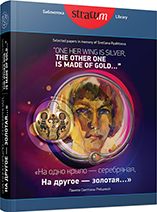Химический состав металла нательных крестов из поселений Устье 2, 3 на Куликовом поле
Chemical Composition of Metal Used in Breast Crosses from Ustye 2, 3 Settlements on the Kulikovo Field
Author(s): Mikhail I. Gonyanyi, Tatiana G. Saracheva
Subject(s): History, Archaeology, 6th to 12th Centuries, 13th to 14th Centuries, 17th Century
Published by: Издательский дом Stratum, Университет «Высшая антропологическая школа»
Keywords: Upper Don area; Kulikovo field; pre-Mongol period; Golden Horde period; underwear crosses; copper-base alloys
Summary/Abstract: A study of chemical composition of metal used in 16 breast crosses found in Ustye 2,3 settlements (Kimovsky district of the Tula Oblast) helped to identify different types of copper-base alloys. It was found that the tin-lead bronze, typical for the non-ferrous metalworking of this territory in the 12th — first half of the 13th century, was still in use in production of crosses during the Golden Horde time. A breast cross of the 17th century was made from a different raw material — multicomponent bronze containing zinc. The sample included well-known and rarely found types of crosses. Planygraphic analysis of finds showed that Ustye 2, 3 settlements stand out among other sites of the Upper Don area by concentration of crosses.
Book: «На одно крыло — серебряная, На другое — золотая...» - Памяти Светланы Рябцевой
- Page Range: 369-380
- Page Count: 12
- Publication Year: 2020
- Language: Russian
- Content File-PDF

